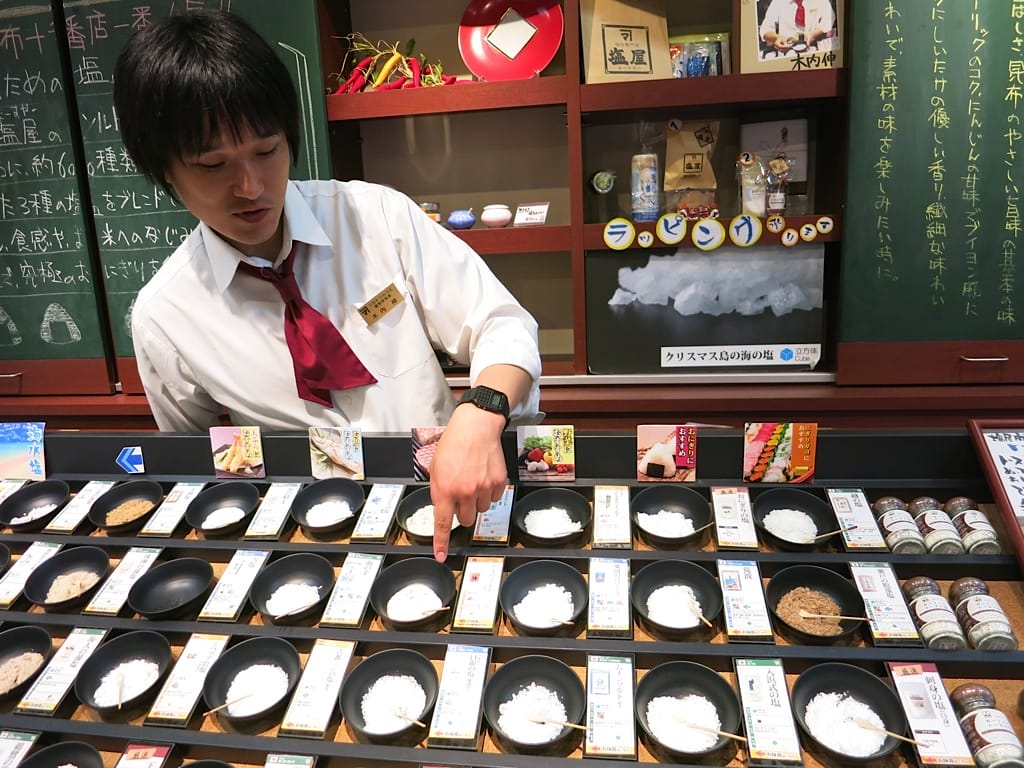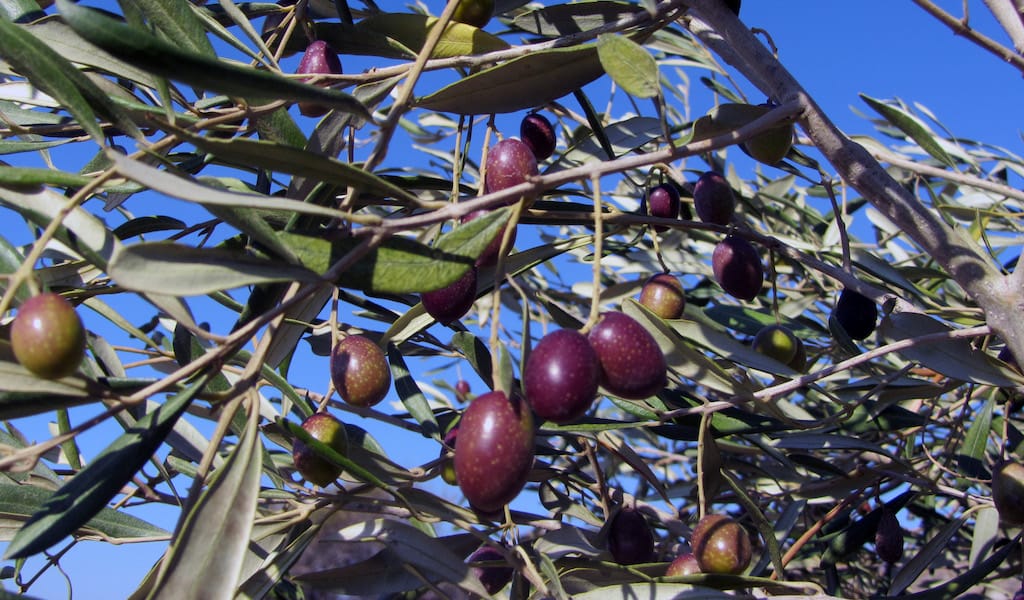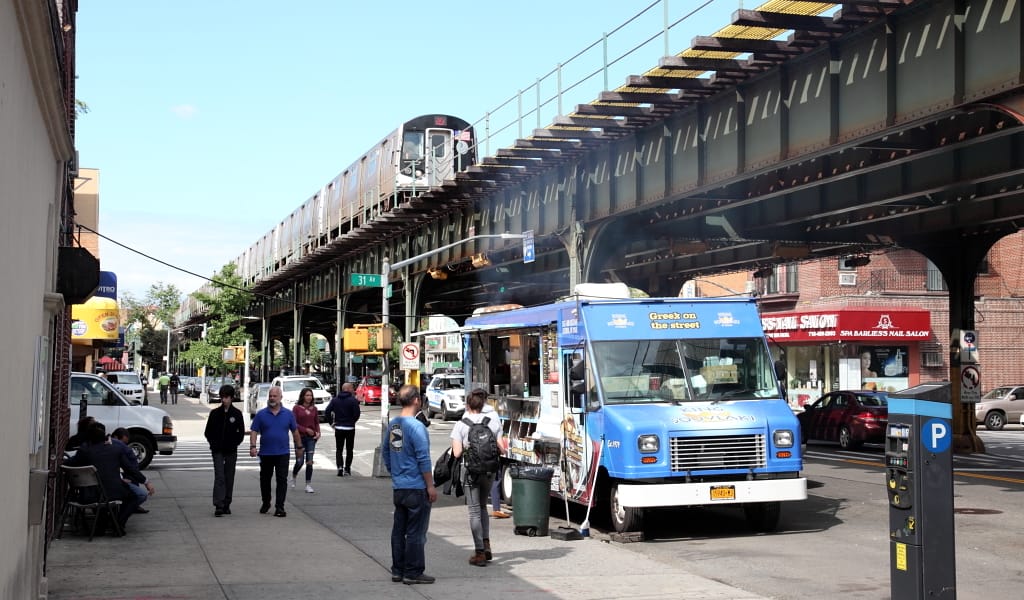The warren of streets surrounding Tsukiji – Tokyo’s main wholesale market – are filled with sushi joints, ramen stands, coffee shops and assorted other restaurants tucked between the stalls and knife makers. Walking around during morning hours, one might often wonder where the people who work inside the market have their meals. The gentrification of Tsukiji has brought such an influx of tourists that the early market is now closed to outsiders. Visitors are limited to the outer parts of the market and the food stands. Restaurants are jammed.
Beginning at 3 a.m., workers drift into the heart of the market and begin to set up for the 5:30 a.m. tuna auction. By 8 a.m., the final bids have been made, the catch ferried to either middlemen or retailers, and the fish to feed Tokyo’s 13 million people is on its way. By 11 a.m., the market has been cleaned and sanitized and the frenzied to and fro of forklifts, minivans, trucks, handcarts and people has finally subsided. Somewhere in the inky dark early-morning rush, people need to eat. Queues outside the usual suspects of restaurants surrounding Tsukiji can be daunting.
Ichiba no Chubo opens at 6 a.m. Tucked into a corner near the heart of the inner market, the restaurant manages to feed many types of people until it finally closes at 10 p.m. Workers stagger in during the early hours, hungry and tired. Come lunchtime, people feeding the bureaucracy surrounding the market stop in for lunch. At night, it’s filled with people in the know.
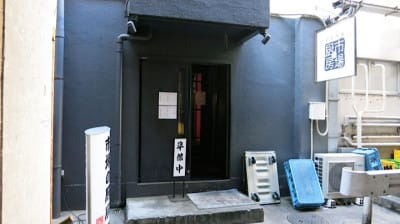 If we didn’t know it was there, we would never find it. Emerge from the A1 exit of the Oedo subway line, turn left and cross the street heading toward the police box. A flurry of forklifts and people indicate where the action is. There is also a large sign for public toilets. Head toward the right and when you enter the darkness of the market, look to the right and you’ll see a nondescript door with the restaurant name in Japanese on a signboard mounted on a wall.
If we didn’t know it was there, we would never find it. Emerge from the A1 exit of the Oedo subway line, turn left and cross the street heading toward the police box. A flurry of forklifts and people indicate where the action is. There is also a large sign for public toilets. Head toward the right and when you enter the darkness of the market, look to the right and you’ll see a nondescript door with the restaurant name in Japanese on a signboard mounted on a wall.
Arriving at a busy time ensures that there’s a wait. We often linger outside, dodging trucks and people as they scurry around. After 11 a.m., there’s more space and an easier time to go is at lunchtime. A counter curves around the kitchen, a good place to sit alone or with a friend. Several smaller tables are toward the rear. Otherwise, it’s communal seating as people consume food, smoke forbidden cigarettes and talk about their day. If the cigarettes are a problem, they will seat people in back, where they obviously think the smoke doesn’t migrate. A foreign face is usually a tipoff that the “non-smoking section” is the desired destination. It merely means the person next to you might not be a smoker.
Only a Japanese-language menu is offered, but a good bet is to watch what others are eating and point. It proves quite effective since the staff is efficient, yet very friendly and happy to accommodate. They usually understand if we want raw or cooked fish. There is a daily special donburi bowl of two fishes from the market, each arriving as directly from the sea as Tokyo allows. Assorted fish served over sushi rice is offered daily as well. In both cases, it will be whatever fish happened to be freshest that morning. On a recent visit the fish included a huge bowl of generous slices of shima aji (striped jack), buri (yellowtail) in season, flaked fresh crab, tobiko (flying fish roe), a sparkling akagai red clam, minced toro (fatty tuna belly) mounted on sliced scallions and a plump shrimp riding atop an egg custard, all for just over $15. The lunch sets included pickles, a small dish of noodles in mayo, fish cake miso soup, rice and tea.
The daily grilled fish in the lunch set include saba (mackerel), a typical Japanese catch. On days we crave beef we order a meat stew with one perfectly poached egg swimming on top. The chef is perpetually busy frying either a mixed tempura with a generous slab of today’s fish, a spicy shishito pepper, eggplant, shrimp and squid or just prawn tempura. There is salt on the table, but the dish is usually eaten dunked in a broth into which we add the shredded daikon and ginger served on the side.
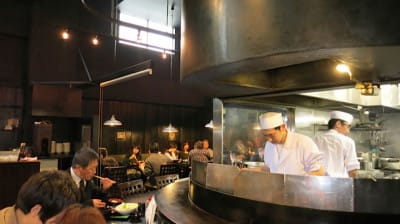 This is basic food, served as fresh as can be. People don’t come to linger and chat over the world’s problems. They come to eat and be satisfied. Drinks are the usual offerings, including beer and sake. There is no dessert. The atmosphere can best be described as “scenic dive” – exactly what one would expect in the middle of a food market. The actual kitchen is neon lit and extremely clean.
This is basic food, served as fresh as can be. People don’t come to linger and chat over the world’s problems. They come to eat and be satisfied. Drinks are the usual offerings, including beer and sake. There is no dessert. The atmosphere can best be described as “scenic dive” – exactly what one would expect in the middle of a food market. The actual kitchen is neon lit and extremely clean.
Ichiba no Chubo is a hidden gem. It’s an adventure to find the place, and the very freshest fish in Tokyo the reward. The secret is out.
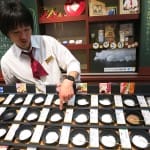 August 20, 2015 Ma-Suya
August 20, 2015 Ma-Suya
Japanese cuisine is often the art of quiet subtlety, and to that end, salt is one of its […] Posted in Tokyo October 10, 2017 Harvest Week
October 10, 2017 Harvest Week
Late October marks the start of the olive picking season throughout Greece. From Thrace […] Posted in Athens September 4, 2017 Skewered
September 4, 2017 Skewered
Grilling meat is a Greek tradition that hearkens back at least to the days of Homer. In […] Posted in Queens
Published on March 25, 2015
Related stories
August 20, 2015
TokyoJapanese cuisine is often the art of quiet subtlety, and to that end, salt is one of its greatest supporters. The freshest of fish can be highlighted with a splash of the correct salt; cold sake drunk from fragrant cedar vessels is well enhanced with salt on the rim; and even tempura is frequently not…
October 10, 2017
AthensLate October marks the start of the olive picking season throughout Greece. From Thrace to Crete, from Corfu to Lesvos, and even in the suburbs of Athens, landowners lucky enough to have olive trees will start harvesting their fruit. And the harvest may continue for another six months. On Crete, for example, where neat rows…
September 4, 2017
QueensGrilling meat is a Greek tradition that hearkens back at least to the days of Homer. In his Iliad, the poet wrote of a sacrifice of cattle to the god Apollo, after which the men “cut all the remainder into pieces and spitted them and roasted all carefully.” They feasted, they drank wine, they sang…













































